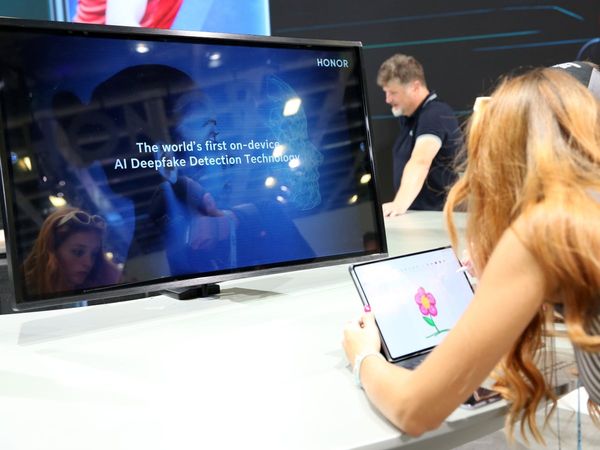Whether you're looking through your parent's old VHS tapes or shopping for a new smartphone, you're participating in and experiencing different stages of the product life cycle, or PLC.
When a product enters the market, often unbeknownst to the consumer, it has a life cycle that carries it from being new and useful to eventually being retired out of circulation in the market. This process happens continually, as products move from their development and introduction stages all the way through maturity to their decline and eventual retirement.
But how does the product life cycle actually work, and how can analyzing it help companies optimize their businesses?
What Is the Product Life Cycle?
The product life cycle is the process a product goes through from when it is first introduced into the market until it declines or is removed from the market. The life cycle has four stages—introduction, growth, maturity, and decline.
While some products may remain in a prolonged maturity state for some time, all products eventually phase out of the market due to several factors including saturation, increased competition, decreased demand, and dropping sales.
Companies use PLC analysis (the process of examining their product's life cycle) to create strategies to sustain their product's longevity or change it to meet market demand or adapt with/to developing technologies.
The 4 Stages of the Product Life Cycle
Once a product is developed, it typically goes through the four stages of the product life cycle—from introduction through decline—before eventually being retired from the market.

1. Introduction
Once a product has been developed, it begins the introduction stage of the PLC. In this stage, the product is released into the market for the first time. The release of a product is often a high-stakes time in the product's life cycle, although it does not necessarily make or break the product's eventual success.
During the introduction stage, marketing and promotion are at a high, and the company often invests quite a bit of effort and capital in promoting the product and getting it into the hands of consumers. This is perhaps best showcased in Apple's (AAPL Get Apple Inc. (AAPL) Report famous launch presentations, which highlight the new features of their newly (or soon-to-be) released products.
It is in this stage that the company is first able to get a sense of how consumers respond to the product, whether they like it, and how successful it may be. However, it is also often a heavy-spending period for the company with no guarantee that the product will pay for itself through sales.
Costs are generally very high during this stage, and there is typically little competition. The principal goals of the introduction stage are to build demand for the product and get it into the hands of consumers, hoping to later cash in on its growing popularity.
2. Growth
During the growth stage, consumers start taking to the product and buying it. The product concept is proven as it becomes more popular, and sales increase.
Other companies become aware of the product and its space in the market as it begins to draw more attention and pull in more revenue. If competition for the product is especially high, the company may still heavily invest in advertising and promotion of the product to beat out competitors. As a result of the product growing, the market itself tends to expand. Products are often tweaked during the growth stage to improve their functions and features.
As the market expands, more competition often drives prices down to make the specific products competitive. However, sales usually increase in volume and continue to generate revenue. Marketing in this stage is aimed at increasing the product's market share.
3. Maturity
When a product reaches maturity, its sales tend to slow, signaling a largely saturated market. At this point, sales may start to drop. Pricing at this stage tends to get competitive, so profit margins shrink as prices begin to fall due to the weight of outside pressures like increased competition and lower demand. Marketing at this point is targeted at fending off competition, and companies often develop new or altered products to reach different market segments.
Given the highly saturated market, less-successful competitors are often pushed out of competition during the maturity stage. This is known as the "shake-out point."
In this stage, saturation is reached and sales volume is maxed out. Companies often begin innovating to maintain or increase their market share, changing or developing their product to satisfy new demographics or keep up with developing technologies.
The maturity stage may last a long time or a short time depending on the product. For some brands and products—like Coca-Cola (KO Get Coca-Cola Company Report—the maturity stage lasts a long time and is very drawn out.
4. Decline
Although companies generally attempt to keep their product alive in the maturity stage as long as possible, eventual decline is inevitable for virtually every product.
In the decline stage, product sales drop significantly, and consumer behavior changes, as there is less demand for the product. The company's product loses more and more market share, and competition tends to cause sales to deteriorate.
Marketing in the decline stage is often minimal or targeted at already-loyal customers, and prices are reduced.
Eventually, the product is retired out of the market altogether unless it is able to redesign itself to remain relevant or in-demand. For example, products like typewriters, telegrams, and muskets are deep in their decline stages (and in fact are almost or completely retired from the market).
Examples of the Product Life Cycle
The life cycle of any product always carries it from its introduction to its inevitable decline, but what does this cycle look like in a practical, real-world sense? Here are four examples.
Typewriter
A classic example of the scope of the product life cycle is the typewriter.
When first introduced in the late 19th century, typewriters grew in popularity as a technology that improved the ease and efficiency of writing. However, new electronic technologies like computers, laptops, and even smartphones replaced typewriters quickly once they were introduced, causing typewriter demand and revenues to drop off.
Overtaken by the likes of companies like Microsoft (MSFT Get Microsoft Corporation (MSFT) Report, typewriters are at the very tail end of their decline phase, with minimal (if existent) sales and drastically decreased demand. Now, the modern world almost exclusively uses desktop computers, laptops, tablets, or smartphones to type. Consequently, these products are experiencing the growth and maturity phases of the product life cycle.
VCR
Many of us grew up watching videotapes using VCRs (videocassette recorders for any Gen-Z readers), but you would likely be hard-pressed to find one in anyone's home these days.
With the rise of streaming services like Netflix (NFLX Get Netflix, Inc. (NFLX) Report and Amazon (AMZN Get Amazon.com, Inc. Report (not to mention the interlude phase of DVDs), VCRs have been effectively phased out and are deep in their decline stage.
Once groundbreaking technology, VCRs are now in very low demand and are bringing in nearly no sales.
Electric Vehicles
Electric vehicles are still in the growth stage of the product life cycle. Companies like Tesla (TSLA Get Tesla Inc Report have been capitalizing on growing demand for years, although recent challenges may signal changes for that particular company.
Still, while the electric car isn't necessarily new, the innovations that companies like Tesla have made in recent years to adapt to new changes in the electric car market signal that the product is still in its growth phase.
Related: Can Lithium Supply Keep Up With Strong Electric Vehicle Demand?
AI Products
While AI (artificial intelligence) has been in development (and application) for years, the industry is continually pushing boundaries and developing new products that are in the introduction stage of the PLC.
Even existing products like AI-infused sex robots or autonomous vehicles are very much still in development. Those that have been released to the market are in the introductory stage, as they are still being tested and adopted by consumers.
What Is PLC Analysis?
PLC analysis is the process of purposefully examing a product and making strategic design, pricing, andmarketing decisions to optimize the product for each stage of its life cycle. Conducting PLC analysis can help companies determine if their products are servicing the market they target efficiently so that they can get a clearer idea of when they might need to shift focus.
By examining their product in relation to the market as a whole, their competitors, sales, and expenses, companies can better decide how to pivot and develop their product for longevity in the marketplace.
Examining their products' life cycles—specifically paying attention to where their products are in the PLC—can help companies determine if they need to develop new products to continue generating sales, especially if the majority of their products are in the maturity or decline stages of the product life cycle.
Popular PLC Pricing Strategies
For companies with products in the introduction phase, there are several pricing models available to begin generating sales.
Price Skimming
Price skimming is a strategy that involves setting the price of a product high initially, then lowering it to "skim" additional groups of consumers as the market expands. When first released, the product is priced high, and demand for it comes only from early adopters, or consumers who are willing to pay a premium for the latest product. Once that group's demand has been satisfied, the price is lowered to attract demand from a new, more price-sensitive group of consumers, and so forth.
Price Penetration
price penetration is a strategy that involves setting the initial price of a product low to penetrate the market as quickly as possible. This strategy helps build consumer awareness, which increases demand. The product's price is then increased as demand for it grows.
How Can Businesses Use the Product Life Cycle to Their Advantage?
Companies often run into trouble when they don't understand the introduction stage of their product's life cycle, especially when customers do not respond well to the initial product (either because of pricing or the inherent value or usefulness of the product).
It is important to examine product advertising and packaging in addition to pricing. Is the product meeting the demands and needs of its target market? If sales are stale, many companies consider shifting their marketing strategy and focus on marketing to new demographics to help introduce their product to a different segment of the consumer market.
Conducting PLC analysis can help companies learn when they need to reinvent their product or pivot it in a new direction. For example, online streaming service Netflix pivoted their product by transitioning away from their DVD-delivery service and toward streaming movies and television series directly online, which was met with great success.
By examining where their product is in the product life cycle, companies can continue innovating to keep up with new technology, diversify their offerings, keep up with the competition, and potentially elongate their product's lifespan in the market.







